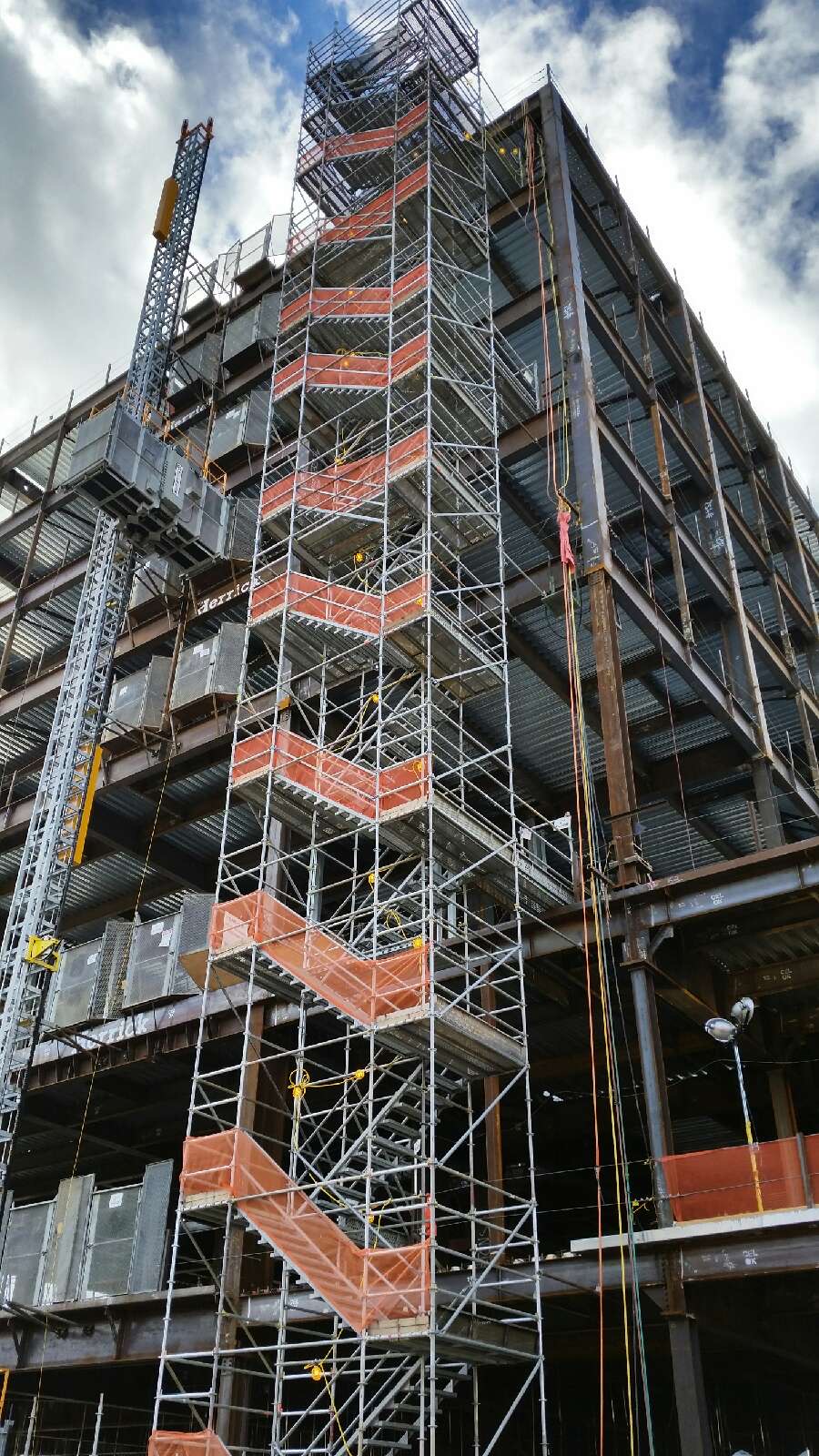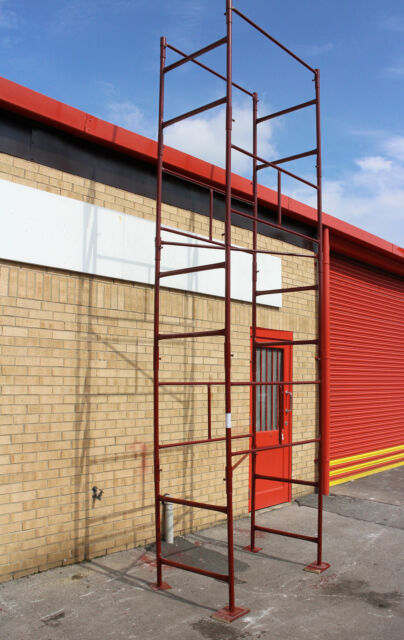Comprehensive Scaffolding Inspections for Satisfaction
Comprehensive scaffolding assessments are important for safety and security and satisfaction on building and construction websites. Diligent tracking and routine checks assure architectural honesty. Secret components like base plates, bracings, and guardrails must be safe and intact. Normal evaluations help recognize dangers and keep a safe workplace. Keep certified with laws by performing regular detailed evaluations, giving sufficient training, and keeping in-depth records. Prioritizing security through inspections is crucial for preventing mishaps and possible risks. Find out about key components, examination frequency, usual issues, and regulatory compliance to guarantee a secure work environment.
Relevance of Scaffolding Inspections
Scaffolding evaluations play an important role in guaranteeing the security and structural stability of building sites. Safety protocols are vital in the building and construction industry, and scaffolding, being a momentary framework, needs cautious surveillance to stop crashes. Regular assessments aid recognize possible risks such as loosened connections, harmed parts, or overloading, every one of which might jeopardize the security of employees on-site. By adhering to rigorous security procedures during evaluations, construction supervisors can minimize dangers and develop a safe and secure setting for all personnel associated with the project.
Additionally, ensuring the structural honesty of scaffolding is necessary to prevent collapses or failures that could lead to injuries or perhaps casualties. Inspections concentrate on evaluating the security of the scaffold, looking for any kind of indicators of wear and tear, and verifying that it can support the intended lots. Detecting and dealing with any structural concerns immediately via evaluations is essential for preserving a secure working environment on building and construction websites.
Key Elements to Check
Throughout normal examinations of scaffolding structures, it is important to thoroughly take a look at essential components for optimum safety and capability. Safety preventative measures must be a top priority throughout these checks to assure the wellness of workers and the honesty of the structure.
When inspecting scaffolding, it is important to pay very close attention to elements such as the base plates, supporting, systems, guardrails, and accessibility factors. Base plates must be safely in place and on steady ground to give a solid foundation. Bracings need to be correctly linked to improve stability and prevent guide. Platforms should be free from debris and damages to sustain workers effectively. Guardrails need to be intact and at the ideal height to prevent drops. Furthermore, accessibility points ought to be clear and safe and secure to enable secure entry and exit.
Normal maintenance ideas include greasing relocating parts, checking for rust or rust, and replacing any damaged parts without delay. By sticking to these standards, scaffolding can be maintained in outstanding problem, ensuring a safe working environment for all. scaffolding inspections
Frequency of Examinations
Regular and regular assessments are critical to maintain the safety and security and honesty of scaffolding frameworks. Routine, complete evaluations are crucial in determining any kind of possible threats or issues that can compromise the safety of employees and the security of the framework. The regularity of assessments should be identified by examining the certain needs of the scaffolding, the duration of usage, and the ecological problems it is subjected to.
For a lot of scaffolding frameworks, it is recommended to carry out assessments prior to first usage, at regular intervals during usage, and after any kind of events that might affect the integrity of the framework, such as severe climate condition or unintentional impacts. Regular examinations ought to likewise be carried out by skilled workers to ensure conformity with security laws and requirements.
Typical Scaffolding Issues
Determining and attending to usual concerns in scaffolding structures is vital to make sure the safety and security and stability of the building and construction site. Safety threats are a main issue when it comes to scaffolding. Problems such as inadequate fall defense, unsteady bases, and improperly created platforms can posture significant risks to employees on-site. Making sure that proper guardrails, toe boards, and personal safety tools are in location is necessary to prevent mishaps and injuries.
Another essential element to ponder is the architectural integrity of the scaffolding. Usual concerns influencing architectural security include overwhelming past the scaffold's ability, poor assembly leading to weak links, and lack of regular assessments to determine wear and tear. These concerns can endanger the general toughness of the scaffolding, increasing the chance of collapses or other crashes.
Routine examinations and upkeep can assist mitigate these usual troubles. By remaining attentive and resolving safety threats and architectural issues without delay, construction websites can preserve a risk-free working environment for all employees entailed.
Ensuring Regulatory Compliance

To preserve a safe and compliant workplace on construction websites, adherence to governing standards relating to scaffolding security is vital. Guaranteeing safety and adhering to industry standards not only shields the employees however also reduces the danger of mishaps and possible lawful effects.
Here are four bottom lines to contemplate when making sure regulative conformity in scaffolding:
- Routine Examinations: Conduct frequent and thorough assessments of scaffolding frameworks to recognize any type of potential hazards or non-compliance problems promptly.

- Correct Training: Guarantee that all workers involved in putting up, dismantling, or working on scaffolds are sufficiently learnt safety protocols and procedures.
- Documentation: Keep comprehensive records of evaluations, upkeep, and training to demonstrate conformity with regulative criteria in case of audits or inspections.
- Adherence to Regulations: Stay informed regarding any kind of updates or modifications in scaffolding laws to guarantee that your methods align with the most recent industry standards and demands.
Often Asked Concerns
Can Scaffolding Inspections Be Performed by Someone Who Is Not a Trained Professional?
Do it yourself examinations by amateur assessors are not suggested for scaffolding. Appropriate training and competence are important for carrying out thorough and safe inspections. Working with experienced professionals warranties compliance with regulations, identifies possible risks, and safeguards versus crashes.
Are There Any Type Of Particular Laws Concerning the Credentials of People Who Can Carry Out Scaffolding Inspections?
Credentials needs for individuals carrying out scaffolding evaluations are essential to ensure compliance with inspection requirements. Rules often mandate that examiners possess relevant training, experience, and certification to secure the security and honesty of scaffolding frameworks.
What Are the Repercussions of Not Conducting Regular Scaffolding Evaluations?
Ignoring normal scaffolding inspections can cause security concerns as a result of prospective structural stability problems. Effects may include accidents, injuries, and even fatalities. Essential evaluations are necessary to determine and address any problems without delay.

Just How Can Climate Issues Impact the Results of a Scaffolding Evaluation?
Weather can influence scaffolding assessments by impacting security preventative measures and devices stability. Variables like wind, rain, or extreme temperature levels can compromise evaluation precision and architectural honesty. Regular monitoring and adjustments are necessary for security.
Exist Any Specific Insurance Demands Associated With Scaffolding Inspections?
Insurance coverage for scaffolding examinations is vital to reduce responsibility risks. Safety standards and compliance requirements often mandate certain insurance coverage. Recognizing and meeting these insurance commitments is crucial for safeguarding both employees and services.
Conclusion
To summarize, extensive scaffolding examinations are essential for making certain safety and regulative conformity on building and construction sites.
By regularly examining key components, determining common problems, and sticking to inspection regularities, assurance can be accomplished knowing that the scaffolding is protected and compliant with laws.
Focusing on these inspections can prevent accidents and injuries, ultimately creating a much safer work environment for all included.
